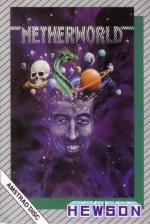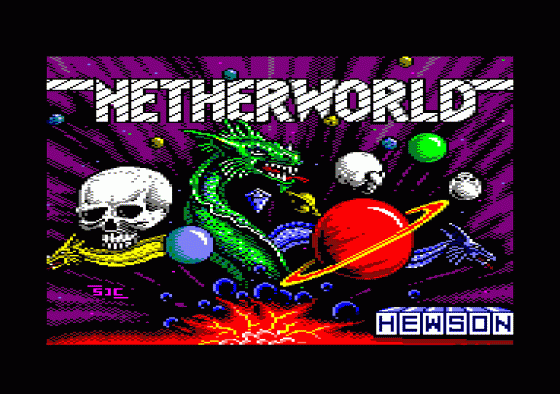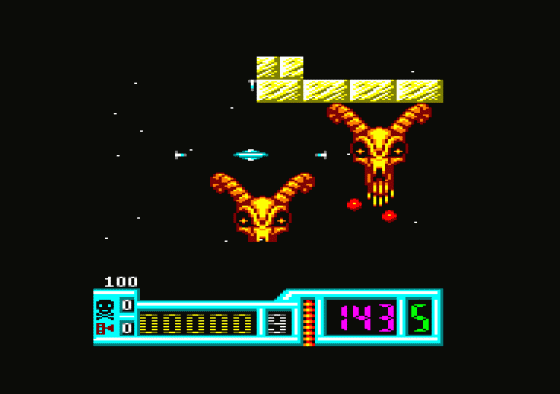
Amstrad Computer User
 1st March 1989
1st March 1989
Categories: Review: Software
Publisher: Hewson Consultants
Machine: Amstrad CPC464
Published in Amstrad Computer User #52
Netherworld
Subtitled Planet Of Purgatory, Netherworld is a happy marriage between two old but immortal ideas - Boulderdash and shoot-'em-ups.
You are inside a gyroscope-like spinning spaceship in a place locked in eternal conflict where the forces of good and evil battle for complete domination.
No, its not the House of Commons, but a brick-walled maze littered with demons, goat heads and alien generators which spit deadly nasties.
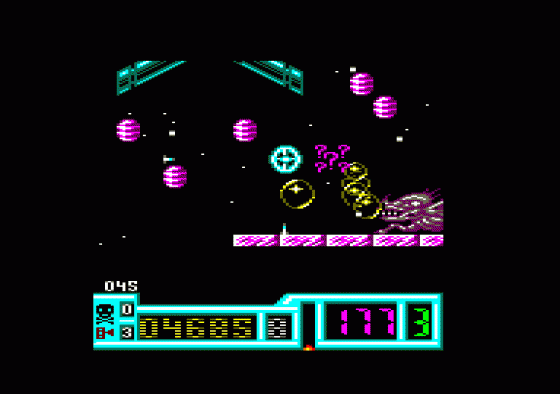
There are other curiosities, such as scanner mines, bounder mines, hover mines and metamorphosis walls. Danger lies everywhere. Fortunately your ship fires in four directions at once. If it didn't, you wouldn't last long.
Your mission is to move from level to level by collecting fifteen diamonds in three minutes. There are very few diamonds ready and waiting to be picked up: you have to create more.
Rocks can be pushed into squeezers, which miraculously change them into diamonds. Deflecting a mine into a metamorphosis wall transforms it into four diamonds. Eggs can be shot, giving you extra points.
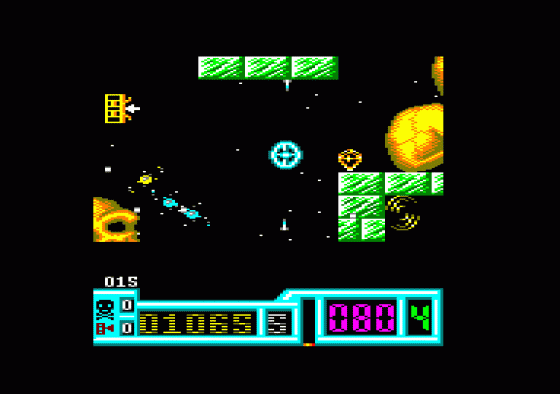
Jumping into a teleport chamber or opening a secret door will tranfer you to the parts of the maze that other ways cannot reach. Absolute life-savers are the hourglasses. Picking one up gives you an extra thirty seconds.
A touch of randomness is added by extra points when you shoot something and, more importantly, the surprise bonus. Denoted by a cluster of question marks, it has four effects, two good and two bad. You can get an extra life - you start with five - or infinite lives, and you can withstand sixteen direct hits before you are blown up. On the other hand, the controls can be reversed or completely scrambled.
Presentation is excellent. A good loading screen and an even better title screen with stars rushing all over the place. Control is via keyboard or joystick. You can select one of four levels to start on.
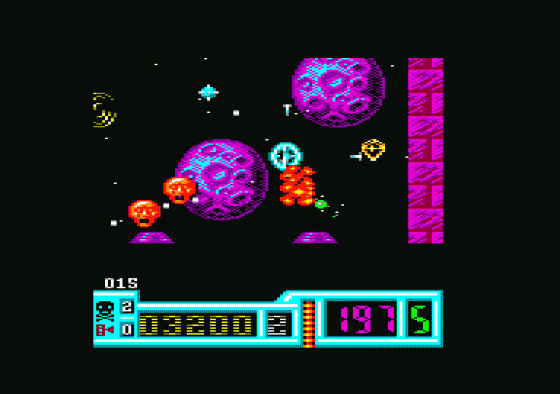
The playing area is large and smooth-scrolling and the graphics are enormous - colourful with no problems in green. But the piece de resistance is the musical accompaniment. It's more than just a collection of tunes. There are sound effects on one channel and the accompaniment on the other two.
The pause mode, of all things, is a revelation. You can turn the accompaniment and/or sound effects up or down, If you turn the accompaniment right oft the sound effects expand to fill all three channels.
Dave Rodgers, the man behind the music, has created at least the equal of anything by the better known Rob Hubbard.
After a couple of damp squibs, Netherworld - a game born in Finland, by the way - continues the long tradition of excellent Hewson shoot 'em ups.
Other Reviews Of Netherworld For The Amstrad CPC464
Netherworld (Hewson)
A review by Gary Barrett (Amstrad Action)

